
The body underwent some cosmetic updates here and there but it was essentially unchanged since it’s introduction in 1970. The drivetrain was another story. In 1970 there was a plethora of choices for engines ranging from the legendary and extremely potent LT1 with 360 hp, the equally ferocious L78 396 with 375 hp, numerous versions of the 350 ci V-8 and the pedestrian in line 250 cu in six cylinder engine.
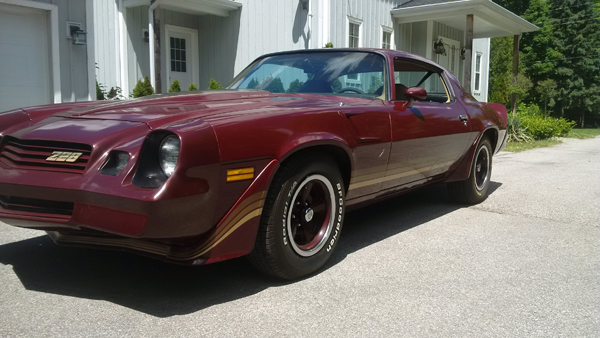
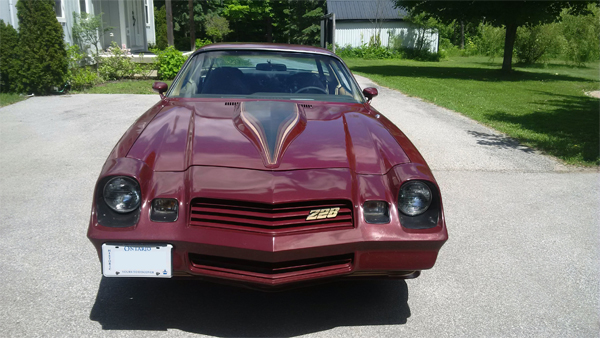
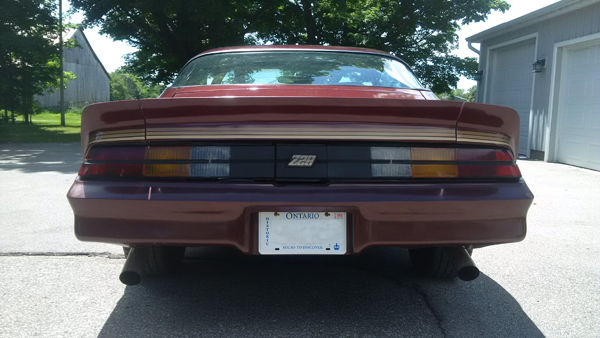
By 1981 the engines were a mere shadow of their former glory. There were now 4 V-8’s offered in various models along with 2 V-6’s. While it might seem like a lot of choice some engines were not available in all areas or not available in all models. There were two engine choices for the Z28. In Canada we were still able to get the 175 HP 350 cu in LM1 V-8 with a 4 speed transmission, everywhere else had to settle for an automatic with the 350. The base Z28 engine was the 165 HP 305 V-8 mated to either the automatic or the 4 speed. Canadian cars were also fortunate in that they did not have the largely disliked and finicky new Computer Command Control emissions system.
Curb weight climbed from 3,278 pounds in 1970 to 3,600 pounds in 1981 or a full 322 pounds! That’s like having two extra bodies in your car to help slow things down. Production numbers for both the beginning and the end of the 2nd gen were almost identical with 124,901 produced in 1970 and 126,139 produced in 1981. 1970 Z28 production came in at 8,733 or 7% of the total while in 1981 there were 43,272 produced or 34% of the overall total- the highest percentage produced relative to the overall number. In between there were a lot of cars built. Total Camaro production for the 12 year run came in at just under 2 million cars and total Z28 production at about 284,000 cars. In the early years the Z28 was not that popular with 1973 representing a high water mark of 12% of the total production for that year. It got so bad that not only did they not produce a Z28 for 1975 and 1976, the upper management at GM almost killed the whole Camaro model. It was only the impressive sales of the sister TransAm that convinced the top brass to re-introduce the Z28 in the spring of 1978 for the 1977 model year calling it a 1977-1/2.
Notable option choices in 1981 saw a large number of buyers opt for air conditioning with 96,095 checking this box. That represents 76% of all buyers! I guess if you can’t go fast you may as well look and feel good! Dual horns were the cheapest option available at $9.00 with 18,212 buyers selecting this option. The least picked option was the AM FM Stereo CB radio with power antennae. At a whopping $487.00 it is no surprise that few wanted to be the “Bandit”.
Colour choices were plentiful with 13 different colours to choose from. The most popular colour was white followed closely by black. Only a mere 1,816 buyers opted for bright yellow. It is interesting to note that you could not order a black car in 1970 but by 1981 demand necessitated this as an option.
In spite of the much lower performance potential the car still looked great and sounded impressive with dual resonators out back and an Air Induction ram air hood. Speaking of performance, the 1981 Camaro with the 350 V-8, 4 speed transmission and standard 3.73 rear end gears blazed through the quarter mile in approximately 16 seconds. Zero to 60 times were in the 8 second range. Comparing that to the LT1 of 1970 the same numbers came in at 14.5 and 6 seconds respectively.
Our featured car began life in February 1981 built at the Norwood Ohio plant and was destined for the Canada market. It soon found a home with the new buyer taking delivery in Trenton Ontario on March 24, 1981. Options included A01 Soft Ray tinted glass- all windows, C49 electric rear window defroster, G80 Limited Slip Rear Axle, TR9 Auxiliary lighting, U69 AM FM Radio, U75 Power Antenna and Z49 Canadian Equipment. Finished in Maroon paint with a Camel cloth standard interior, it retains all of its original equipment, original drivetrain, original paint and has been carefully maintained over the years. There have been just 6 owners since new.
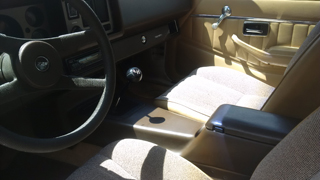
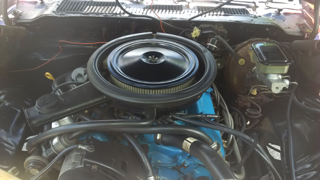
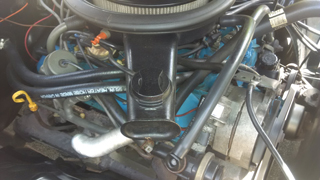

When you first approach the car you notice the sleek sculpted curvy lines of the front and rear fenders. The car sits low to the ground and the standard 15x7steel body coloured rims with beautiful bright steel chrome trim rings and “meaty” P225/70 R-15 white letter tires fill the wheel wells in a muscular and authoritative way. The huge door swings wide to allow easy access to the supportive cloth bucket seats. Once seated everything is within easy reach. The instrument panel is well laid out with a temperature gauge, fuel gauge, clock, voltage gauge, a large 5,000 red line tach on the right and a large 140 kph or 85 mph speedometer on the left. Yes that is correct. In the energy conscious early 80’s government’s both here and it the U.S. thought it would help slow things down by putting a low maximum on the speedometer. Today that upper limit is pretty well standard cruising speed on our highways! I can tell you from personal experience you went as fast as the car could go with no thought to the actual indicated speed.
The clutch, brake and gas pedal are all within easy reach and receptive to heel and toeing shifting if so desired. The round ball gear shifter fits snugly and comfortably in the palm of your hand. With a few quick pumps of the accelerator and a turn of the key the engine roars to life. With only a single catalytic converter followed by two dual resonators out back the exhaust is a low, strong rumble reminiscent of the 60’s muscle car era. Moving the shifter from reverse into first gear is precise and direct. The clutch is not hard on the leg and takes up smoothly and effortlessly. With 275 foot pounds of torque it is easy to move the car out.
Once on the road the ride is firm and the steering is tight. The faux string wrapped steering wheel has a firm spongy feel to it and fills your grip completely. The seats are somewhat supportive but nothing like today’s. The cloth seats stay cool in the summer and warmer in the winter than either leather or vinyl. The cloth covering has an added benefit of helping you stay in the seat as cloth on cloth tends to stick better than do pants on vinyl or leather.
From a standing start there is enough torque to easily fry the tires down to the core. Managing the wheel spin provides the best launch and at full throttle the Air Induction electrically operated hood scoop opens wide to allow dense fresh air directly into the engine. The enormous amount of air being sucked in along with the strong flow of exhaust provides a potent melody of mechanical music. With a relatively low 5,000 rpm limit gear changes come about rather quickly. In the age of limited computer control modules, there is no rev limiter or fuel cutoff to save you from yourself!
Long cruises are comfortable, the heating and ventilation work well and there is plenty of room for two. Visibility is excellent out front and back with some blind spots around the rear C pillars. As with most sports cars there is limited room in the back for anyone larger than a 10 year old!
Standard bumper to bumper warranty was one year or 20,000kms. Rust was still an issue for cars of this era as modern rust prevention techniques were still years away. Thee were no major issues with reliability with the V-8 engine which by this time was well established.
This is no muscle car. Emissions and government regulations brought the performance era to an end many years before. What did improve was the handling, ride and braking performance and it shows. This car is a pleasure to drive, looks great, handles with no surprises and was one of the more popular cars on the road in its day. With so many produced there are plenty of well preserved examples around. Prices are starting to move up as the youth of the day are now in their 40’s and 50’s and looking for the car of their dreams.
